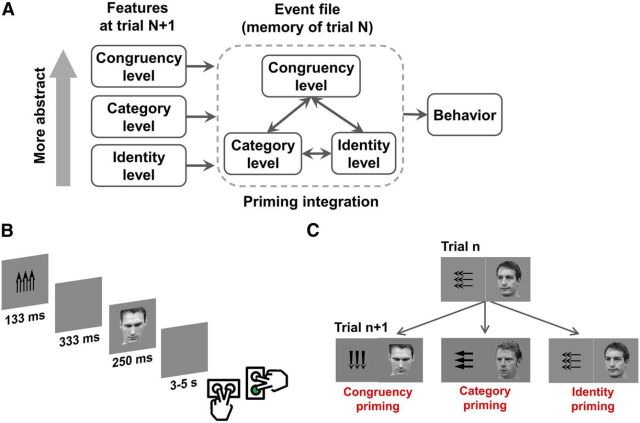Figure 1.
Event-file-priming framework and task design. A, Schematic illustration of the event file memory-matching framework in the context of the current task. Physical, categorical, and internal (attentional state) event features are bound together into an event file (trial N). In trial N + 1, any features matching the previous trial event file will cue the retrieval of that file; the exact feature matching relationship (e.g., partial match vs complete match) will determine whether this process speeds or slows responses. B, Time course of an example incongruent trial and response mapping (correct response is in green). C, Example trial sequence conditions: congruency-priming sequence (left): a congruent trial is followed by another congruent trial in the absence of any concrete stimulus feature repetitions, representing a match of features at the most abstract (congruency or control state) feature level; category-priming sequence (middle): a trial with left-oriented arrows and face is followed by another trial with left-oriented arrows and face, but of differing identities, representing a repetition at the category (direction) level; identity-priming sequence (right): two physically identical target-distracter ensembles appear successively, representing a complete repetition at the most concrete, identity feature level.

